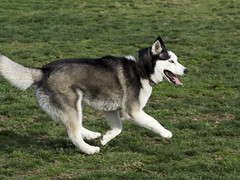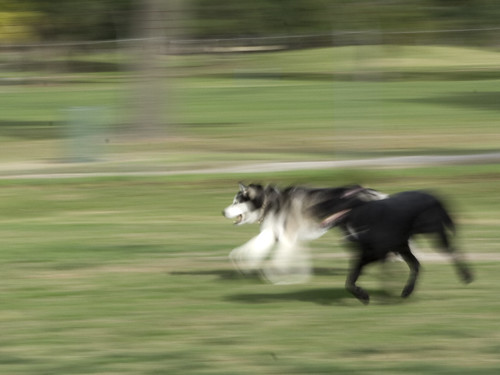Last weekend I took my dog Ivan to the local dog park, and decided to experiment with panning. Panning is a technique where you follow a moving subject with your camera, producing a picture with a relatively sharp subject and a blurred background. Panning can emphasize the speed and motion of your subject.
To pan, use a relatively slow shutter speed. When your subject approaches, follow the subject with your camera. Press the shutter as the subject crosses in front of you, and continue to follow the subject after the shutter closes. This will help you maintain a smooth shot from start to finish.
This was my first experiment with panning, and I still need more practice. Here are some of the best from the day.
 |
 |
 |
What did I learn?
- Panning works best when the subject is moving in a relatively straight line at an angle perpendicular to your position. Subjects that are moving erratically can result in shots that are rather messy. The perpendicular position provides the greatest emphasis to your subject’s speed.
- Panning takes a lot of practice. Even when you master this technique, you’ll end up with a lot of duds.
- Panning is easier when you can anticipate the action. The dog park is not the ideal setting for practicing. For practice, cars on a busy street would be easier and more predictable.